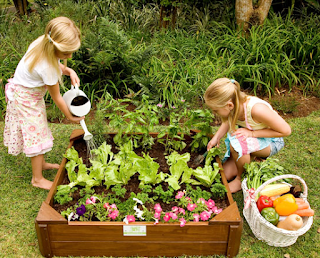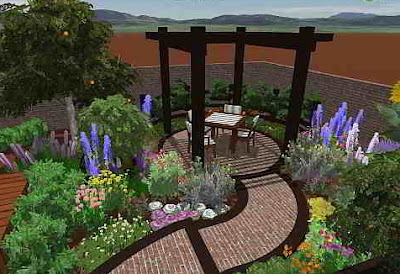Garage is not only a parking area we use to park the cars and bikes, it can serve as storage, a construction area if you like to build things, and a place we basically put unnecessary and not useful things in. The more we place things in the garage the more it clutters, and as soon it gets crowded, it gets messy and disorganized. Our things are just everywhere until we trip on the m and misplace things when we need them, such as dad’s tools. Worst comes to worst, until your car ends up parking at driveway and not in the garage anymore. The garage then is taken for granted because it looks complicated to clean and you just do not know where to start and how you would accumulate everything that is in there.
Garage organizing is not as complicated as you think if you have the right materials and a plan on how you want to organize the place. Before you start, remove your car and bikes out of the garage. Look at the garage and choose an area where you want to start. Sort out things in each area, by separating the items still being used from the ones that are not, including the broken ones. Sort things by grouping the items that goes together, such as tools used for fixing and repair, auto repair tools and materials for autos, sports gears, suitcase, and others.
Purchase several plastic bins, the larger they are they better. Purchase different colored bin to easily categorized things. Purchase bins that have locks on them to valuable and dangerous items like power tools and chemicals or substances you use for cleaning and fixing things. Make room against the wall to hang brooms, rakes, chairs, and other items that could be hung. Bikes do not need to parked; you can also hang those using hooks.
Build and create storage shelves or shelves with cubby holes against the wall. Filling up one whole wall with storage shelves will help store things more organize. If you do not have enough room in the garage, you can build floating shelves on the wall and just use plastic bins and stacks them neatly against the wall. Build cabinets with locks to place any chemicals or substances you may need for cleaning.
If you have storage in the backyard, remove all the gardening tools like gas leaf blower backpack , lawn mowers, out of the garage so it will be easier for you to find your gardening tools when need. Instead of placing hooks against the walls to hang things, you can use pegboards, to easily hang things without having to install hooks.
Check your local home improvement stores and look for or ask for materials you can use to organize the garage. Garage organizing could be fun and a good place to start cleaning. Maintaining a neat garage leads to less accidents and a safer place for you and your kids. Organizing the garage is a start to a well kept home.
This blog is about my experience in gardening. How to get the best leaf vacuum mulcher, you will get excited about gardening
Saturday, March 26, 2016
GARDENING TAKING CARE OF NATURE
Gardening is an act of taking care of growing plants in one’s garden or backyard. It is also a way of practicing how plants should grow. A gardener is someone who does the gardening. But any person could do such gardening. Gardening can be a great help in the beautification of one’s home. Most common plants that can be seen in a garden are ornamental plants. These plants are used for decorative purposes in gardens because of the color and structure of its flowers, stems, leaves, scent, texture, fruit, bark, etc. Such gardening flowers or plants are roses, tulip, lily, carnation, orchid, sunflower, etc. Others prefer to use the consumable plants. These plants grow for personal needs like food, medicine, livelihood, etc.
There are different types of gardening;
- (1) residential garden is made near the house.
- (2) Indoor gardening is about rising of plants within a dwelling or building,
- (3) Native plant gardening is a way of using native plants for making harmony in a specific area,
- (4) Water gardening is a way of rising plants in pools or ponds and a sample of it is a bog garden,
- (5) Container gardening is a way of rising plants in a container either inside or outside, and
- (6) Community gardening is a communal activity wherein an area is gardened by a lot of people in groups.
There are basic gardening tips on how you could be able to take care of your garden. First, Watering, it is the basic need of a plant. However, overwatering could cause a plant to die. Second, Feeding, fertilizers can be a great help in a plant to grow healthy but it is best to use organic fertilizers so it will not destroy the soil. Third, Lighting, plants number one requirement is the sunlight. Thus, there are other plants which can stay out from the sunlight. Other needs less light. So it is best to check and research the plant’s needs. Fourth, Temperature, other house plants need a moist environment so better study and check about your plants. Lastly, Re-potting, some plants need to be re-potted especially if its container is too small. But other plants don’t want to disturbed its roots. Also some have small roots that it doesn’t need to be re-potted. Check the roots if it needs it be, re-pot it.
For a better way of making the plants healthy, one should take note of the garden pests. Garden pests can be insects, plants, or animals which bring harm to the garden plants. It may eat plant parts, disturbed the soil, otherwise, kill the plant, reduce its quality or slow down its growth. One way of solving it is the garden pest control with the use of pesticides. However, there are natural ways of getting rid of pests instead of using pesticides like pulling out the infected ones, also the proper way of choosing a healthy soil could be a prevention of having pests in soils. Rotating crops could also reduce pests. Another thing is to keep disinfecting or cleaning gardening tools used in infected plants to be able not to spread these pests in your garden.
SOME TREES ON YOUR GARDEN
The choice of the trees more often than not resolves many issues that might come up later on. If you are planning to nurture a fruit tree that is loaded seven months long, the probability that the neighborhood kids to come and hunt is there. You must select according to your desire of privacy. In the same way the healthy trees take a lot more space than the hedges and might even disburse over to some flower or vegetable patch. Normally, a tree has a growth rate of three feet in one year, so have some tree that will provide you with some adventure along the way.
You can find the best trees in the street and from other gardens such as your friends’. You may ask them to provide with a little cutting from their trees so you can grow them into your own garden – a thrifty way indeed. The cutting most often works better than starting any tree from seedling because cutting can give you a big plant for less. Likewise, choose the tree according to the surroundings – for instance, if you live in the beach, the mountain trees might not grow the way it should be. If you are wondering what trees you can grow, you can always visit a friend’s garden see what trees he have. You can also see the trees you can grow in your garden along the streets.
Many garden owner wish to have instant trees – the ones that are already grown. However, having grown trees delivered through cranes can be embarrassing for the street. It is still better to do the natural way for better results. Furthermore, the grown trees have a propensity to take more time to adjust to their new environment unlike the seedlings or the cuttings. Plus, you get the chance to enjoy the process of growing a tree.
If this is the first time that you will have a tree in your garden, find time to take care of it as it grows. Nurture it like a baby. However, if you are too busy to find time to take care of the tree in any way but still want to have some trees on your garden, just start with a tree that is manageable like small trees – Euonymus Fortunei, Spindle, Cornus-Alba, or Dog wood are some of the trees you can start with.
Keep in mind that trees also have their own lives like us, humans, so we better take a good care of them as we take good care of ourselves.
Tuesday, March 8, 2016
Small Garden Bridges Add the Right Note
Think about using small garden bridges to add an interesting note to your garden.
Whether you add a wooden garden bridge or some other type of decorative garden bridge, it can make your garden more beautiful and alluring.
Garden bridges can be both utilitarian and beautiful in your home garden landscape. Some people use small garden bridges as an accent over a pond or creek, as a meditation spot in a Japanese or Zen garden, or simply as one more decorative addition across a "lake" of plants or flowers.
Some garden bridges arc gracefully over a stream or pond, while others extend straight and flat to the other side. There are almost as many varieties as there are gardens in the world.
Small garden bridges are certainly beautiful. But there are other benefits as well...
• They can lend a sense of tranquility or serenity to any garden. Although bridges are used traditionally in Japanese gardens, they can be just as effective in a non-Asian garden.
• There are many styles and materials you can use to give your garden a truly unique "you" feel. The possibilities are almost endless!
• Bridges aren't only useful over water... they can be placed over dry or marshy areas as well. They can also be placed over sandy areas or a dry "streambed" of stones.
As mentioned above, your small garden bridges can be made of wood, vinyl, even stone or cement. They can be merely decorative or strong enough to walk over. It's really up to you and the effect you are looking to create with this decorative garden bridge focal point.
You might decide to build your own small garden bridge if you're handy. You can find garden bridge plans online or in many landscaping books.
You might even engage a contractor to build a wooden garden bridge for you. You can also buy decorative garden bridges from many online or local garden suppliers. The approach you use is really dependent on your time, budget, and personal preferences.
Whether you have a wooden garden bridge or some other type of decorative garden bridge, it's important to follow some general care and maintenance tips. For example, wooden garden bridges should be stained and sealed for maximum durability and beauty. If your bridge is put together from separate parts, be sure to check connections for tightness and safety. You may also need to clean your small garden bridge from time to time with a hose or soapy water.
I love the look of small garden bridges, no matter how large or small the garden. I encourage you to consider placing a decorative garden bridge in your backyard, if you want a landscape that is truly unique!
 |
| Small Garden Bridges |
Whether you add a wooden garden bridge or some other type of decorative garden bridge, it can make your garden more beautiful and alluring.
Garden bridges can be both utilitarian and beautiful in your home garden landscape. Some people use small garden bridges as an accent over a pond or creek, as a meditation spot in a Japanese or Zen garden, or simply as one more decorative addition across a "lake" of plants or flowers.
Some garden bridges arc gracefully over a stream or pond, while others extend straight and flat to the other side. There are almost as many varieties as there are gardens in the world.
Benefits of Garden Bridges
Small garden bridges are certainly beautiful. But there are other benefits as well...
• They can lend a sense of tranquility or serenity to any garden. Although bridges are used traditionally in Japanese gardens, they can be just as effective in a non-Asian garden.
• There are many styles and materials you can use to give your garden a truly unique "you" feel. The possibilities are almost endless!
• Bridges aren't only useful over water... they can be placed over dry or marshy areas as well. They can also be placed over sandy areas or a dry "streambed" of stones.
As mentioned above, your small garden bridges can be made of wood, vinyl, even stone or cement. They can be merely decorative or strong enough to walk over. It's really up to you and the effect you are looking to create with this decorative garden bridge focal point.
How to Add a Garden Bridge to Your Landscape
You might decide to build your own small garden bridge if you're handy. You can find garden bridge plans online or in many landscaping books.
You might even engage a contractor to build a wooden garden bridge for you. You can also buy decorative garden bridges from many online or local garden suppliers. The approach you use is really dependent on your time, budget, and personal preferences.
Care and Maintenance of Small Garden Bridges
Whether you have a wooden garden bridge or some other type of decorative garden bridge, it's important to follow some general care and maintenance tips. For example, wooden garden bridges should be stained and sealed for maximum durability and beauty. If your bridge is put together from separate parts, be sure to check connections for tightness and safety. You may also need to clean your small garden bridge from time to time with a hose or soapy water.
I love the look of small garden bridges, no matter how large or small the garden. I encourage you to consider placing a decorative garden bridge in your backyard, if you want a landscape that is truly unique!
Zen Gardens for the Masses
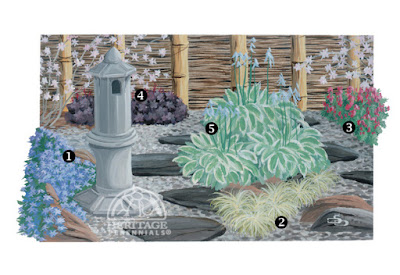 |
| Zen Gardens |
What is it about zen gardens? What, exactly, is their appeal?
This type of garden has its roots in ancient Japan. It is a place of peaceful, calming serenity. The most famous were found in Kyoto, Japan.
Traditionally, zen gardens are composed of sand, rocks, and maybe light plant stuffs, such as moss and grasses. Though they look simple, achieving the right balance and design in a zen garden can be tricky.
But some work done by Kyoto University has made it easier for the common (non-Japanese) person to construct their own perfect zen oasis in the garden.
Raking of the rocks and sand is part of the zen gardens ritual too. The sand is supposed to represent water and raking it into the patterns of ripples and currents is standard.
If the prospect of building your own zen garden is too much for you, consider making a tabletop zen garden in a shallow container for indoors or the patio. I've even seen a kit sold in the local bookstore to make a super small tabletop zen garden!
I'll be adding more about zen gardens to this page later, so please check back!
Beginners Tips for Gardening
One of the most enjoyable things that a person could ever do is gardening. It’s great to see when your plants are growing well and healthy. How does gardening give you benefits? Well it’s simple! This is one way of keeping your family to eat safe, clean and fresh fruits as well as veggies right from your very own backyard. You don’t need to spend time and money to go to the market anymore for them. There are a couple of things that you need to do in order to know how to let your plants grow healthy and have the benefit to not need to pay for your own nutritious consumption.
TIP #1- CHOOSING YOUR SOIL
Choosing the soil to be used is one of the most important factors that will help our plants to grow healthy. Plants love loom soil. Too sandy soil is not good because it easily gets dry especially during hot season. On the other hand, if you are going to resort for a too muddy soil it will also cause your plants to be rotten. If you desire to use an already mixed soil, you can buy it online especially if you cannot make your own compost or find a loom soil in your backyard.
TIP #2- KNOWING THE DIFFERENT TYPES OF PLANTS
There are several varieties of plants that we can grow in our own backyard. But before you plant each one of them, be sure to read the instructions on the seed pack on how to plant it, the weather condition of when to plant them and the best season that is suitable for each one of them.
TIP #3-FERTILIZATION
Most gardeners prefer commercial fertilizers that are often sold in gardening stores for their garden especially when their area or garden lot is big. But many backyard gardeners on the other hand, prefer organic fertilizers which are safer to use than commercial. But for small scale gardens composting are the most applied way to fertilize your plants. Not only to save money it can also help also make our surroundings clean by collecting dried leaves, shredded papers, fruit skins and leftovers and put it in a pit on the ground. You also have the option to use a container with a hole at the lower front to make an outlet and to discard the materials when it is ready for use.
TIP #4- WATERING
Plants really need water. Lack of water decreases the ability of your plants and crops to bear fruit or to produce green leaves. At times especially when it is hot your plants need more water to avoid dryness of the soil. The best time to water your plants is early in the morning or late in the afternoon. It is also good to observe your plants and place a cover above it or put it under the shed to avoid being hit directly by the intense summer sunlight. This will help them avoid drying up from too much heat.
TIP #1- CHOOSING YOUR SOIL
Choosing the soil to be used is one of the most important factors that will help our plants to grow healthy. Plants love loom soil. Too sandy soil is not good because it easily gets dry especially during hot season. On the other hand, if you are going to resort for a too muddy soil it will also cause your plants to be rotten. If you desire to use an already mixed soil, you can buy it online especially if you cannot make your own compost or find a loom soil in your backyard.
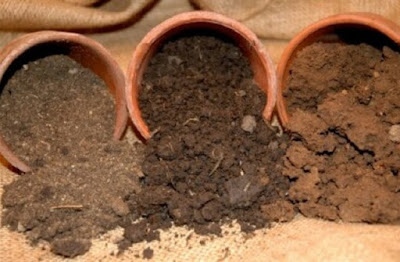 |
| CHOOSING YOUR SOIL |
TIP #2- KNOWING THE DIFFERENT TYPES OF PLANTS
There are several varieties of plants that we can grow in our own backyard. But before you plant each one of them, be sure to read the instructions on the seed pack on how to plant it, the weather condition of when to plant them and the best season that is suitable for each one of them.
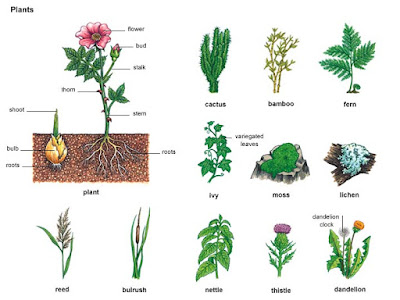 |
| DIFFERENT TYPES OF PLANTS |
TIP #3-FERTILIZATION
Most gardeners prefer commercial fertilizers that are often sold in gardening stores for their garden especially when their area or garden lot is big. But many backyard gardeners on the other hand, prefer organic fertilizers which are safer to use than commercial. But for small scale gardens composting are the most applied way to fertilize your plants. Not only to save money it can also help also make our surroundings clean by collecting dried leaves, shredded papers, fruit skins and leftovers and put it in a pit on the ground. You also have the option to use a container with a hole at the lower front to make an outlet and to discard the materials when it is ready for use.
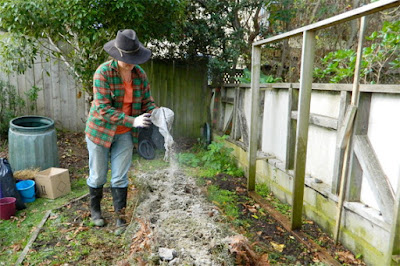 |
| FERTILIZATION |
TIP #4- WATERING
Plants really need water. Lack of water decreases the ability of your plants and crops to bear fruit or to produce green leaves. At times especially when it is hot your plants need more water to avoid dryness of the soil. The best time to water your plants is early in the morning or late in the afternoon. It is also good to observe your plants and place a cover above it or put it under the shed to avoid being hit directly by the intense summer sunlight. This will help them avoid drying up from too much heat.
 |
| WATERING |
Monday, March 7, 2016
Leaf Blower Safety Tips
Leaf blowers are generally considered very safe as long as you follow some simple and common sense guidelines.
Read the Owner’s Manual: Before using your new leaf blower for the first time, be sure to read the owner’s manual from cover to cover. Although many models are similar, all of them will have different features you should be aware of. Any safety concerns for your particular leaf blower should be highlighted in the manual and easy to spot.
Wear Eye Protection: Be sure to protect your eyes at all times when operating your leaf blower. Regular safety glasses are adequate but wrap around goggles are highly recommended. Generally speaking, it’s not the leaves you have to worry about. Considering many leaf blowers have wind speeds in excess of 150 miles per hour, flying debris such as particles or dirt or small pebble can be very hazardous. It’s also a good idea to check to make sure that your eye protection is OSHA approved.
Wear Hearing Protection: Your new leaf blower may not seem very loud but prolonged use of any power tool has the potential to damage your hearing. Simple foam ear plugs will do the trick here. They’re inexepensive and provide very good protection when inserted properly. Ear Muff style noise protection will also work perfectly but will cost more and be less comfortable.
Use GFI Protection: Whenever using any electric power tool outdoors, it’s always best to use a GFI (ground fault interrupter) protected power circuit. This type of circuit will prevent you from getting a life threatening electrical shock should something go wrong. If your home is newer, chances are that all your exterior electrical outlets are GFI protected but this is not something you should take for granted. GFI electrical outlets are easily spotted as they typically have a “test” and “reset” button located right on the outlet. If these buttons are not present, verify that the circuit is protected via a GFI circuit breaker in your home’s electrical panel. If you’re still not sure, consult a local electrician or use a plug in type GFCI extension cord like the one pictured below.
Coleman GFCI Plug
Be Aware of Surroundings: Always be aware of your surroundings when operating your leaf blower. The same flying dust and dirt that poses a hazard to you can pose a hazard to others. Avoid using your leaf blower when children are present and never point the nozzle at property that may be damaged by flying debris. Automotive finishes and some types of residential siding could be easily damaged if you’re not careful.
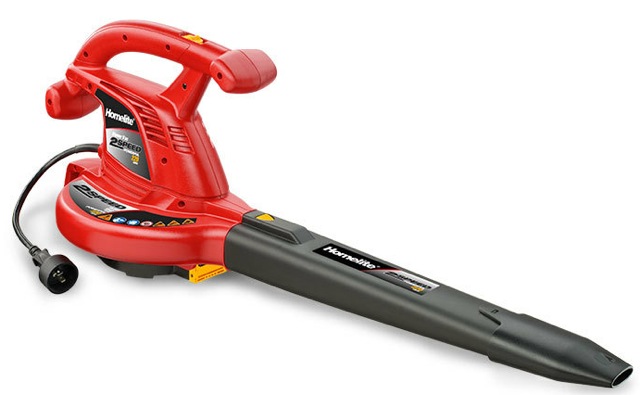 |
| Leaf Blower Safety Tips |
Read the Owner’s Manual: Before using your new leaf blower for the first time, be sure to read the owner’s manual from cover to cover. Although many models are similar, all of them will have different features you should be aware of. Any safety concerns for your particular leaf blower should be highlighted in the manual and easy to spot.
Wear Eye Protection: Be sure to protect your eyes at all times when operating your leaf blower. Regular safety glasses are adequate but wrap around goggles are highly recommended. Generally speaking, it’s not the leaves you have to worry about. Considering many leaf blowers have wind speeds in excess of 150 miles per hour, flying debris such as particles or dirt or small pebble can be very hazardous. It’s also a good idea to check to make sure that your eye protection is OSHA approved.
Wear Hearing Protection: Your new leaf blower may not seem very loud but prolonged use of any power tool has the potential to damage your hearing. Simple foam ear plugs will do the trick here. They’re inexepensive and provide very good protection when inserted properly. Ear Muff style noise protection will also work perfectly but will cost more and be less comfortable.
Use GFI Protection: Whenever using any electric power tool outdoors, it’s always best to use a GFI (ground fault interrupter) protected power circuit. This type of circuit will prevent you from getting a life threatening electrical shock should something go wrong. If your home is newer, chances are that all your exterior electrical outlets are GFI protected but this is not something you should take for granted. GFI electrical outlets are easily spotted as they typically have a “test” and “reset” button located right on the outlet. If these buttons are not present, verify that the circuit is protected via a GFI circuit breaker in your home’s electrical panel. If you’re still not sure, consult a local electrician or use a plug in type GFCI extension cord like the one pictured below.
Coleman GFCI Plug
Be Aware of Surroundings: Always be aware of your surroundings when operating your leaf blower. The same flying dust and dirt that poses a hazard to you can pose a hazard to others. Avoid using your leaf blower when children are present and never point the nozzle at property that may be damaged by flying debris. Automotive finishes and some types of residential siding could be easily damaged if you’re not careful.
Thursday, March 3, 2016
Black and Decker NS118 18-Volt Cordless Electric Leaf Blower Broom Hard Surface Sweeper Review
The Black and Decker Leaf Blower solves the mobility problems. Mobility is one of the common problems when it comes to leaf blowers. Electric leaf blowers are the worst when you talk about mobility because you always need to find a nearby outlet or use an extension cord in order to reach other areas. Gas or oil powered leaf blowers offer better mobility but are not eco-friendly and give off unhealthy fumes. It runs on a high power and long lasting battery so you can move around as much as you like without the noise and fumes that come with gas leaf blowers.
The Black & Decker NS118 18-Volt Cordless Electric Broom Hard Surface Sweeper is one convenient and smart leaf blower. It blows away leaves and debris with air speed as high as 120 mph. Its cordless and lightweight structure makes yard work easy and fast. It is less than 5 pounds which gives you better control of the machine and consequently more control over the direction in which you blow the debris to.
Can be found at 47% off retail here:
The Pros
The Cons
The Black & Decker NS118 18-Volt Cordless Electric Leaf Blower Broom Hard Surface Sweeper is best suited for:
Black & Decker NS118 18-Volt Cordless Electric Leaf Blower Broom Hard Surface Sweeper Features:
The Black & Decker NS118 18-Volt Cordless Electric Broom Hard Surface Sweeper is one convenient and smart leaf blower. It blows away leaves and debris with air speed as high as 120 mph. Its cordless and lightweight structure makes yard work easy and fast. It is less than 5 pounds which gives you better control of the machine and consequently more control over the direction in which you blow the debris to.
 |
| Black and Decker NS118 18-Volt Cordless Electric Leaf Blower |
Can be found at 47% off retail here:
The Pros
- Battery is interchangeable with other Black&Decker products
- Super light
- Simple to use
The Cons
- Limited battery life
- Battery life is 10 to 15 minutes
- Replacement batteries are expensive
The Black & Decker NS118 18-Volt Cordless Electric Leaf Blower Broom Hard Surface Sweeper is best suited for:
- Small framed people
- Mechanically challenged people<Will start every time>
- Smaller homes <Batteries last 10 to 15 minutes>
Black & Decker NS118 18-Volt Cordless Electric Leaf Blower Broom Hard Surface Sweeper Features:
- Cordless broom with lightweight leaf blower, the frame is designed ergonomically
- Rechargeable 18-volt NiCd battery
- Wall-mounted battery charger for convenient storage
- Includes sweeper and straight tube
- 18-Volt battery and battery charger included
Subscribe to:
Posts (Atom)


